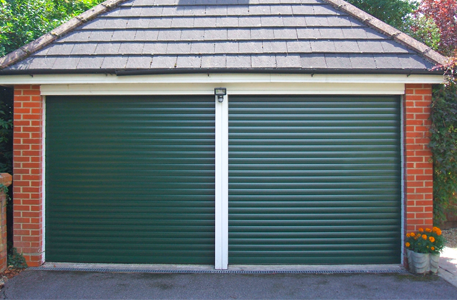Extract from DHF recently released document: 1. What laws do you need to comply with?
The law requires garage doors must be safe when first placed on the market or put into service. The main legal requirements that affect the safety of new powered garage doors are detailed in two pieces of European legislation:
- The Supply of Machinery (Safety) Regulations 2008 (SMR)
- The Construction Products Regulation 2011 - EU No. 305/2011 (CPR)
Both of these require the garage door to carry a CE mark and to be accompanied by official declarations: a "declaration of conformity" in the case of SMR and a "declaration of performance" in the case of CPR. The responsible person must also maintain and keep a technical file detailing how regulations have been complied with; this file must be produced whenever required by enforcement authorities.
2. What about the European standard?
The "harmonised" European standard for garage doors is BS EN 13241-1:2003 + A1:2011. Under SMR, compliance with the standard is optional BUT a compliant door will be presumed to conform to the SMR legislation. If the door does not fully comply with the harmonised standard, the person responsible must demonstrate that an equivalent level of safety has been achieved. Under CPR, compliance with certain clauses of the harmonised standard is compulsory; one of these is the clause relating to operating forces of powered doors.
3. What does this mean for safety on the main closing edge?
The minimum requirements for safety on the closing edge are summarised below:
|
Type of Control |
Conditions of Use
|
||
|
|
Trained Users |
Trained Users |
Untrained Users |
|
Hold to run (i.e., continuouspressure required) located in a safe place in sight of door |
0 |
* |
*** |
|
Impulse (i.e., continuous pressure not required) located in a safe place in sight of door |
** |
** |
*** |
|
Impulse not located in sight of door |
** |
*** |
*** |
|
Automatic |
*** |
*** |
*** |
Key to table
0 = No additional safety required
* = Key switch or similar to prevent unauthorised use
** = EITHER force limitation OR comprehensive presence detection
*** = EITHER a combination of force limitation and auxiliary presence detection OR comprehensive presence detection
- By comprehensive presence detection we mean a system of presence detection which ensures that in no circumstances can a person be touched by the moving door. The system must comply with BS EN 12978:2003 + Al:2009 as well as being able to detect obstacles when tested in accordance with BS EN 12445:2001.
- By auxiliary presence detection we mean a system which would detect a person or obstacle on the floor on one side of the door; not necessarily compliant with BS EN 12978:2003 + A1:2009. Must always be combined with force limitation as the primary safety system.
Note the following:
- Hold to run controls must be located in a safe place and in sight of the door.
- There is NO situation where a simple photoelectric cell on its own is sufficient.
- A comprehensive presence detection system is always considered adequate (but is relatively expensive).
- Automated doors always require force limitation unless protected by comprehensive presence detection.
- Force limitation can be EITHER inherent (built into the operator) OR external (such as a safety edge). In either case the door must be able to pass the force test in BS EN 12445:2001, clause 5.
- Tubular motors do not generally have inherent force limitation; a safety edge will normally be required to comply with the standard.
4. Conclusion
In order for a powered garage door to be legally placed on the market today, you must, as a minimum, be able to answer YES to ONE of the following questions:
- Is the door controlled exclusively by a hold to run control located in a safe place within sight of the door?
- Is the door protected by comprehensive presence detection?
- Does the operator have inbuilt force limitation?
- Is the door fitted with a safety edge?
(In the case of 3 or 4, you may need to fit auxiliary presence detection in addition to force limitation, depending on the level of risk as defined in the table above.
